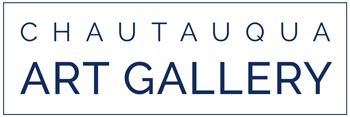Step One: develop a brand identity to connect with people near and far who will buy your artwork.
This is the first of several articles to share some of the techniques, ideas and applications I've been using to help build my digital presence in the Chautauqua region and beyond. I am cutting through the hundreds of web programming and marketing acronyms to build a simple and solid digital strategy that will help grow my audience for promoting my artwork and hopefully help other artists along the way!
Defining your brand identity.
Now to get down to business - in this first article I want to discuss branding and identity.
It's hard to think in business terms when all you want to do is create artwork! But if you spend sometime upfront developing your brand identity it will make your promotional efforts pain free and at the same time be a good motivator for your creative self.
Defining who you are and what you do will give you consistency and continuity in the stories you create when you build a website, or write social media posts and emails to tell people about your work. Being able to focus on the same themes and ideas across platforms will keep more people connected with your work.
I like this definition of brand identity from HubSpot: "A brand identity is made up of what your brand says, what your values are, how you communicate your product, and what you want people to feel when they interact it. Essentially, your brand identity is the personality of your business and a promise to your customers."
Answering some of the following questions in a few sentences can help you shape your brand identity. Wether you are selling directly online or using an online presence to create awareness for your artwork at a physical location, the answers you give will help you build consistency and professionalism in your endeavors and will guide all of your marketing and promotions.
What is your personality as an artist and how would you describe your style? (Are you sleek and professional, sassy, whimsical, earthy...?)
What are you creating and how are you making it? (Your media and materials, subject matter, process and presentation....)
Who is your audience? What are the characteristics of a person who will buy your artwork? (What is their personality type? Where do they live? What type of job do they have? What social issues are important to them? Do they have a family?)
Why should your audience buy your artwork? What value does your work bring for them? How will their lives be better once they own your artwork?
Now tell me who you are - and do it briefly because this is the internet!
Using the brainstorming info above, in one - three sentences tell me who you are: your name, what you create and why you create it. (Sort of like a really tiny artist statement)
Leslie Calimeri, watercolor artist: I explore Chautauqua County photographing and sketching the diverse variety of landscapes I find. By capturing these places I call out the shapes, colors and spaces that inform the environment of our everyday lives. These paintings and drawings ask the viewer to consider the simple beauty of the space around us.
"Chautauqua Art Gallery is a boutique gallery in Lakewood New York where you can browse, discover and buy regional fine artwork. We currently showcase nine incredible artists, all of whom draw artistic influence from the Chautauqua region."
Creating a logo
A logo is an important part of your identity but doesn't have to be complicated. If you have trouble thinking of symbols and shapes that speak for your artwork you can stick with a logotype. A logotype is a consistently used typeface and style to write your name or business name. You should be able to use a version of it on your website, social media, business cards and other print materials -including your sign at an art fair.
The logotype I use for the gallery is simple and clean. I want to be clear about our name but also let the artwork be the highlight of any promotion.
That's it!
Clearly defining your brand and identity is the first step to creating an online presence and building an audience. I'll post a second article next week on how to select a platform to showcase your artwork and begin developing your audience.
Here are a few more articles with branding and logo details:








Comments